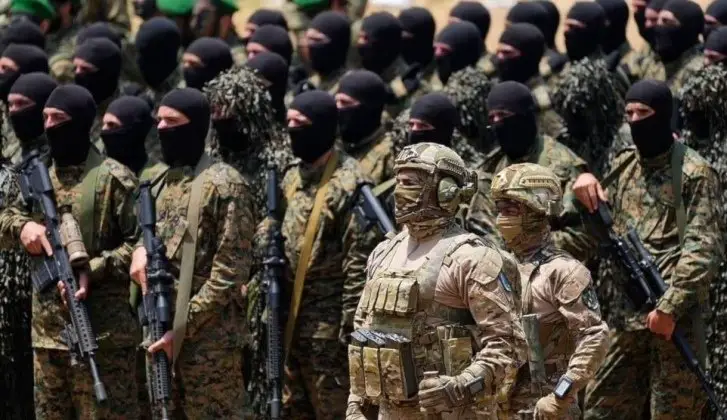<p >The Israel Defence Forces have taken more than 70 casualties at a military training camp in Binyamina, south of the port city of Haifa, after the Lebanese&nbsp;paramilitary group Hezbollah launched a drone strike against it. Footage from inside the facility has confirmed serious damage, with blood seen across a dining area were personnel were reportedly hit, while subsequently released footage showed the arrival of well over a dozen ambulances at the base. Hezbollah said it launched “a squadron of attack drones” at the facility. At least four Israeli soldiers were killed in the attack, with Hezbollah stating that further strikes would continue if Israel’s invasion of Lebanon did not case. “What it witnessed today in southern Haifa is nothing compared to what awaits it if it decides to continue its aggression against our noble and dear people,” the paramilitary group announced, with strikes so far thought to have demonstrated only a small portion of its offensive potential.&nbsp;</p><p ><img src=" title="Mirsad-1 Drone Widely Used By Hezbollah" ></p><p >Hezbollah drone strikes deep into Lebanon have continued to cause major damage, and are considered to be retaliation for Israel’s ongoing carpet bombing of segments of Lebanese population centres and its attempted invasion of Southern Lebanon. Low speed and compact unmanned aircraft have posed new challenges for Israeli defences, much as they <a href=" target="_blank">have for Russia</a> as joint Western-Ukrainian strikes from 2023 targeted key cities deep inside the country. Hezbollah surveillance drones have consistently demonstrated an ability to operate deep inside Israel with near impunity, while a drone attack by Iraqi paramilitaries on October 3&nbsp;caused <a href=" target="_blank">26 military casualties</a> including two deaths at an Israeli military base. Hezbollah has notably used drones for air defence suppression in the past, complementing its rocket artillery strikes against Israeli targets.&nbsp;Indeed, hours after the attack on the camp in Haifa Hezbollah’s rocket artillery targeted a separate nearby military base. Hezbollah has issued a warning for Israeli civilians to stay away from military bases to help minimise civilian casualties.&nbsp;</p><p ><img src=" title="Merkava IV Tank on the Israeli Lebanese Border in Early Hours of Israel`s Invasion"></p><p >The effective decentralisation of command within Hezbollah has consistently frustrated Israeli efforts to significantly weaken the group by <a href=" >neutralising its leadership</a>. The fact that the militia group maintains the bulk of its bases and weapons depots deep underground in a vast network several thousand kilometres wide of tunnels and bunkers has made Israeli efforts to neutralise targets highly challenging, and minimised the effectiveness of tactical air power. Israeli air strikes have thus focused on high level strategic bombardment of Lebanon including the destruction of healthcare and other emergency services and key infrastructure, mirroring their previous bombardment of the Gaza Strip. The impact of this bombardment on Hezbollah’s fighting strength has been relatively limited. Preceding Israeli escalation to a <a href=" >full scale invasion</a> in late September, Hezbollah and Israel engaged in a near continuous series of&nbsp;<a href=" >skirmishes</a>&nbsp;from October 2023. The Lebanese paramilitary has demonstrated sophisticated military capabilities on multiple occasions, including the ability to use a range of drone and&nbsp;<a href=" >artillery assets&nbsp;</a>for&nbsp;complex air defence suppression operations, which include&nbsp;<a href=" >neutralising</a>&nbsp;Israel’s&nbsp;<a href=" >Iron Dome</a>&nbsp;and <a href=" >David’s Sling</a> air defence systems.</p>
Israeli Forces Take Over 70 Casualties to Hezbollah Drone Strike: Assault on Lebanon Intensifies

